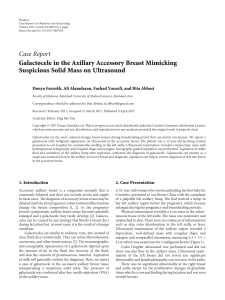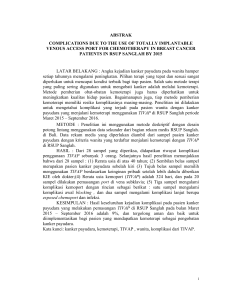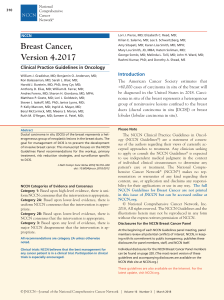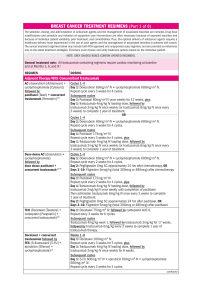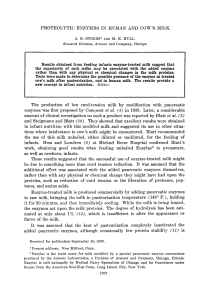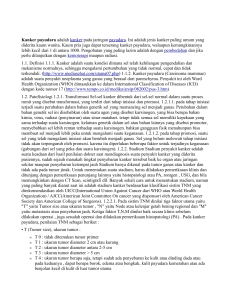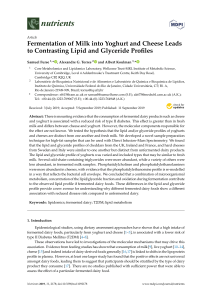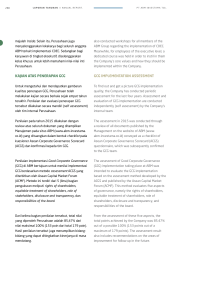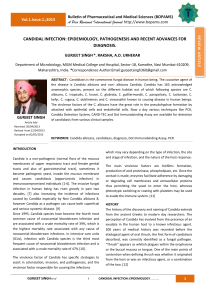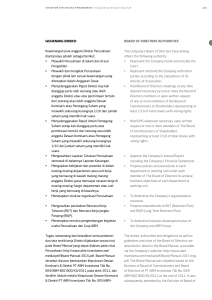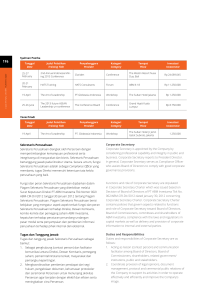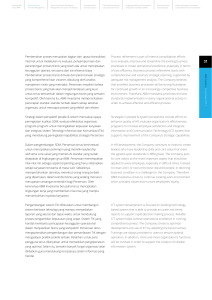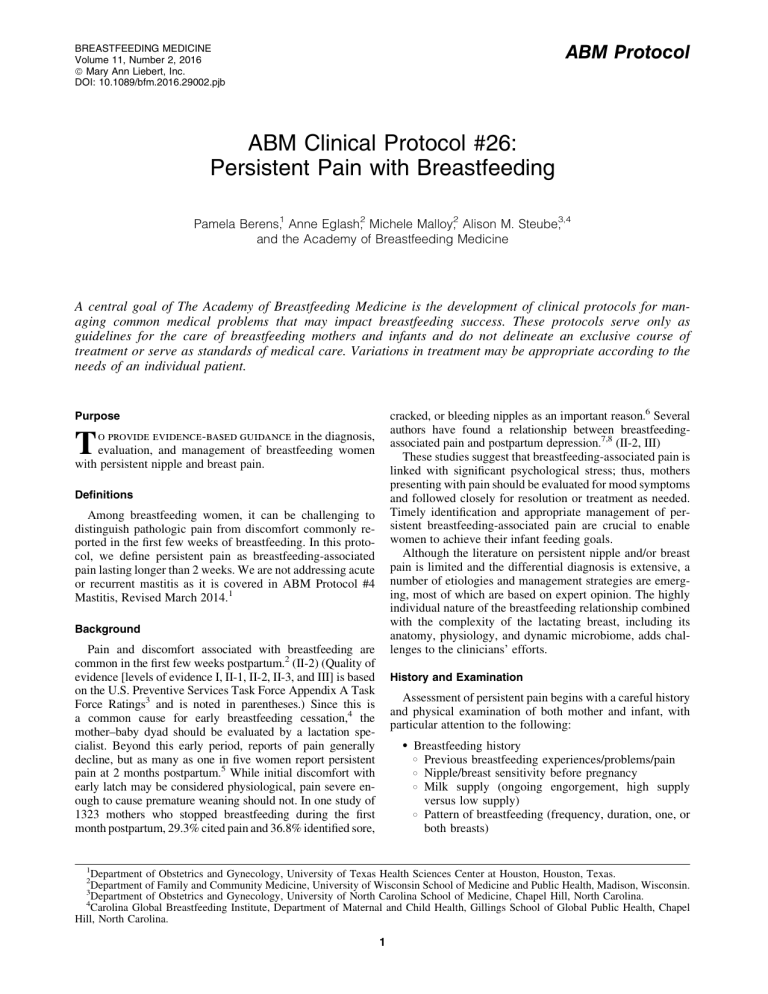
BREASTFEEDING MEDICINE Volume 11, Number 2, 2016 ª Mary Ann Liebert, Inc. DOI: 10.1089/bfm.2016.29002.pjb ABM Protocol ABM Clinical Protocol #26: Persistent Pain with Breastfeeding Pamela Berens,1 Anne Eglash,2 Michele Malloy,2 Alison M. Steube,3,4 and the Academy of Breastfeeding Medicine A central goal of The Academy of Breastfeeding Medicine is the development of clinical protocols for managing common medical problems that may impact breastfeeding success. These protocols serve only as guidelines for the care of breastfeeding mothers and infants and do not delineate an exclusive course of treatment or serve as standards of medical care. Variations in treatment may be appropriate according to the needs of an individual patient. cracked, or bleeding nipples as an important reason.6 Several authors have found a relationship between breastfeedingassociated pain and postpartum depression.7,8 (II-2, III) These studies suggest that breastfeeding-associated pain is linked with significant psychological stress; thus, mothers presenting with pain should be evaluated for mood symptoms and followed closely for resolution or treatment as needed. Timely identification and appropriate management of persistent breastfeeding-associated pain are crucial to enable women to achieve their infant feeding goals. Although the literature on persistent nipple and/or breast pain is limited and the differential diagnosis is extensive, a number of etiologies and management strategies are emerging, most of which are based on expert opinion. The highly individual nature of the breastfeeding relationship combined with the complexity of the lactating breast, including its anatomy, physiology, and dynamic microbiome, adds challenges to the clinicians’ efforts. Purpose T o provide evidence-based guidance in the diagnosis, evaluation, and management of breastfeeding women with persistent nipple and breast pain. Definitions Among breastfeeding women, it can be challenging to distinguish pathologic pain from discomfort commonly reported in the first few weeks of breastfeeding. In this protocol, we define persistent pain as breastfeeding-associated pain lasting longer than 2 weeks. We are not addressing acute or recurrent mastitis as it is covered in ABM Protocol #4 Mastitis, Revised March 2014.1 Background Pain and discomfort associated with breastfeeding are common in the first few weeks postpartum.2 (II-2) (Quality of evidence [levels of evidence I, II-1, II-2, II-3, and III] is based on the U.S. Preventive Services Task Force Appendix A Task Force Ratings3 and is noted in parentheses.) Since this is a common cause for early breastfeeding cessation,4 the mother–baby dyad should be evaluated by a lactation specialist. Beyond this early period, reports of pain generally decline, but as many as one in five women report persistent pain at 2 months postpartum.5 While initial discomfort with early latch may be considered physiological, pain severe enough to cause premature weaning should not. In one study of 1323 mothers who stopped breastfeeding during the first month postpartum, 29.3% cited pain and 36.8% identified sore, History and Examination Assessment of persistent pain begins with a careful history and physical examination of both mother and infant, with particular attention to the following: Breastfeeding history Previous breastfeeding experiences/problems/pain B Nipple/breast sensitivity before pregnancy B Milk supply (ongoing engorgement, high supply versus low supply) B Pattern of breastfeeding (frequency, duration, one, or both breasts) B 1 Department of Obstetrics and Gynecology, University of Texas Health Sciences Center at Houston, Houston, Texas. Department of Family and Community Medicine, University of Wisconsin School of Medicine and Public Health, Madison, Wisconsin. 3 Department of Obstetrics and Gynecology, University of North Carolina School of Medicine, Chapel Hill, North Carolina. 4 Carolina Global Breastfeeding Institute, Department of Maternal and Child Health, Gillings School of Global Public Health, Chapel Hill, North Carolina. 2 1 2 ABM PROTOCOL Expression of milk, frequency, hand expression, and/ or type of pump B Mother’s attitudes toward breastfeeding and her breastfeeding goals Pain history B Onset postpartum B Early nipple trauma (abrasions, cracks, bleeding) B Context (with latch, during breastfeeding, between breastfeeds, with milk expression) B Location (nipple and/or breast; superficial versus deep) B Duration (timing, intermittent, or constant) B Character (burning, itching, sharp, shooting, dull, aching) B Pain severity using rating scale, such as 0–10 B Associated signs and symptoms (skin changes, nipple color change, nipple shape/appearance after feeding, fever) B Exacerbating/ameliorating factors (cold, heat, light touch, deep pressure) B Treatment thus far (analgesia, including nonsteroidal anti-inflammatory drugs and/or narcotic preparations), antibiotics, antifungals, steroids, herbs, lubricants, other supplements Maternal history B Complications during pregnancy, labor, and birth (medical conditions, interventions) B Medical conditions (especially Raynaud’s phenomenon, cold sensitivity, migraines, dermatitis, eczema, chronic pain syndromes, candida infection, family history of ankyloglossia) B History of breast surgery and reason B Medications B Allergies B Depression, anxiety B History of herpes simplex or zoster in the nipple/ breast region B History of recent breast infections Infant history B Birth trauma or abnormalities on examination B Current age and gestational age at birth B Birth weight, weight gain, and general health B Behavior at the breast (pulling, squirming, biting, coughing, shortness of breath, excessive sleepiness) B Fussiness B Gastrointestinal problems (reflux symptoms, bloody stools, mucous stools) B Medical conditions/syndromes B Previous diagnosis of ankyloglossia; frenotomy B Medications Examination should include the following: B Mother General appearance (pale [anemia], exhaustion) B Assessment of nipples (skin integrity, sensitivity, purulent drainage, presence/absence of rashes, coloration, lesions) B Breast examination (masses, tenderness to light/deep pressure) B Sensitivity to light or sharp touch on body of breast, areola, and nipple B Manual expression of milk (assess for pain with maneuver) B Assessment of maternal mood using a validated instrument, such as the Edinburgh Postnatal Depression Scale Infant B Symmetry of head and facial features (including jaw angle, eye/ear position) B Oral anatomy (presence/absence of lingual frenulum, evidence of thrush, palate abnormality, submucosal cleft) B Airway (looking for nasal congestion) B Head and neck range of motion B Infant muscle tone B Other infant behavior that may give clues to underlying neurologic problems, for example, nystagmus A breastfeeding session should be directly observed to assess the following: B Maternal positioning Infant positioning and behavior at the breast Latch (wide-open mouth with lips everted) Suck dynamics—pattern of feeding, nutritive and nonnutritive sucking, sleeping Shape and color of nipple after feeding If the mother is expressing milk, the clinician should directly observe an expressing session to assess the following: Hand expressing technique Breast shield/flange fit Breast pump dynamics, including suction and cycle frequency with the pump the mother is using Evidence of trauma from the breast pump Laboratory studies, such as milk and nipple cultures (Table 2), may be considered based on the history and physical exam findings such as the following: Acute mastitis or mastitis that is not resolving with antibiotics Persistent nipple cracks, fissures, or drainage Erythema or rashes suggesting viral or fungal infection Breast pain out of proportion to examination (appear normal, but very tender, breasts or nipples) Differential Diagnosis The potential causes of persistent breast and nipple pain are numerous, may occur concurrently or sequentially, and include the following: Nipple damage Dermatosis Infection Vasospasm/Raynaud’s phenomenon Allodynia/functional pain Table 1 lists symptoms and management of the different diagnoses described below. Nipple damage Epidermal compromise increases the risk of developing infection and pain. Breastfeeding or using a breast pump to express milk can induce an inflammatory response in nipple skin, which may result in erythema, edema, fissures, and/or blisters. ABM PROTOCOL 1. Abnormal latch/suck dynamic B Suboptimal positioning. Often cited as the most common cause of sore nipples, suboptimal positioning of the infant during a breastfeed can lead to a shallow latch and abnormal compression of the nipple between the tongue and palate.9–11 (II-2, III, III) B Disorganized or dysfunctional latch/suck: The ability of an infant to properly latch and breastfeed is dependent, among other factors, on prematurity, oral and mandibular anatomy, muscle tone, neurological maturity, and reflux or congenital abnormities, as well as maternal issues such as milk flow, breast/ nipple size, and engorgement. Infants who are premature, have low oral tone, and reflux/aspiration or congenital anomalies that may be at risk for disorganized suckling.12 (III) Evaluation of the infant for difficulty coordinating sucking and swallowing may be indicated. B Ankyloglossia (tongue-tie), recognized in 0.02– 10.7% of newborns, involves the restriction of tongue movement (projection) beyond the lower gum13 due to an abnormally short or thickened lingual frenulum. Poor tongue movement may lead to difficulty attaining a deep latch and is frequently associated with maternal nipple pain.14,15 (II-3, I) Factors such as breast fullness, milk flow, nipple size and elasticity, infant palate shape, and height affect the impact of ankyloglossia on the mother’s nipples. Not all infants with ankyloglossia cause problems for the breastfeeding dyad. B Infant biting or jaw clenching at the breast: Infants who bite or clench their jaws while breastfeeding may cause nipple damage and breast pain. Conditions that may lead to this behavior include clavicle fractures, torticollis, head/neck or facial trauma, mandibular asymmetry,16 oral defensiveness or aversion (e.g., infants force-fed with ridged nipples [teats]), tonic bite reflex, nasal congestion, a response to an overactive milk ejection reflex, and teething. (III) 2. Breast pump trauma/misuse Because of the widespread use of breast pumps in many countries and the variability of consumer education, literacy, and support, there is significant potential for harm from breast pump use. In a survey in the United States, 14.6% of 1844 mothers reported injuries related to pump use.17 (II-2) Injury may be either a direct result of pump misuse or failure or an exacerbation of pre-existing nipple damage or pathology. Observing the mother while using the breast pump may clarify the cause(s) of trauma (i.e., improper flange fit, excessive high-pressure suction, or prolonged duration). Dermatoses Breast dermatoses such as eczematous conditions or, less commonly, psoriasis and mammary Paget’s disease may be responsible for nipple and/or breast pain in lactating women. Any of these conditions may be secondarily infected with Staphylococcus aureus, causing impetiginous changes such as weeping, yellow crusting, and blisters.18 (III) 3 1. Eczematous conditions These conditions can affect any skin, but are commonly seen on and around the areola in breastfeeding women. Attention to the distribution of skin irritation and lesions may help identify the underlying cause/ trigger. Eczematous rashes vary considerably. B Atopic dermatitis (eczema): This condition occurs in women with an atopic tendency and may be triggered by skin irritants and other factors such as weather and temperature change.19 B Irritant contact dermatitis: Common offending agents include friction, infant (oral) medications, solid foods (consumed by the infant), breast pads, laundry detergents, dryer sheets, fabric softeners, fragrances, and creams used for nipple soreness.18 B Allergic contact dermatitis: Common offending agents include lanolin, antibiotics (topical), chamomile, vitamins A and E, and fragrances.18,20 (III) 2. Psoriasis Flares can occur during lactation sporadically (usually 4–6 weeks after the birth21 (III) or as a response to skin injury (koebnerization) from latch, suckling, or biting. 3. Mammary Paget’s disease (Paget’s disease of the nipple) More common in postmenopausal women (60–80% of cases), but observed in younger women, this slowgrowing intraductal carcinoma mimics eczema of the nipple. A unilateral, slowly advancing nipple eczema that begins on the face of the nipple is unresponsive to usual treatment, persists longer than 3 weeks, or is associated with a palpable mass should increase suspicion for Paget’s disease.18 Other findings consistent with the diagnosis are ulceration, moist erythema, vesicles, and/or granular erosions.22 (II-2) Skin biopsy and referral for specialist treatment are necessary. Infection Although a number of studies have attempted to identify what, if any, microbe may cause persistent nipple/breast pain during lactation, the roles of bacteria and yeast remain unclear. Both Staphylococcus sp and Candida can be found on nipples and in breast milk of women with no symptoms.23 (II-2) Additional theories suggest a role for virulence traits that make detection and elimination of potentially causative microbes extremely difficult. These include biofilm formation, consisting of bacteria alone24,25 (III, III animal/ in vitro studies) or mixed species of Staphylococcus sp and Candida,26,27 (III, III animal/in vitro studies), as well as intracellular infection by small colony variants.28 (III animal/ in vitro studies) 1. Bacterial B Superficial bacterial infection in setting of skin trauma: Infection secondary to damaged skin, especially around the nipple–areolar complex, is a common occurrence. Impetigo and cellulitis may occur alone or concurrent with an underlying dermatitis.18 B Bacterial dysbiosis and lactiferous duct infection: Bacterial overgrowth combined with biofilm formed by bacteria (possibly in conjunction with Candida sp) may lead to narrowed lactiferous ducts and inflamed 4 ABM PROTOCOL Table 1. Conditions, Symptoms, and Management of Persistent Nipple/Breast Pain Condition Symptoms/signs Management Frenulotomy/frenulectomy using scissors or laser Ongoing nipple damage and an infant with restricted tongue movement due to by a trained health professional44–46 (I, II-2, 1). a tight lingual frenulum Observe a pumping session. Breast pump Nipple or soft tissue injury/bruising Adjust level of suction or fit of flange. trauma/misuse Reduce identifiable triggers. Eczematous Erythematous skin Apply an emollient. conditions Acute episodes: blisters, erosions, Apply low/medium-strength steroid ointment twice weeping/oozing, and crust formation Chronic eruptions: dry, scaling, and daily for 2 weeks (immediately after a breastfeed to lichenified (thickened) areas. maximize contact time before the next Lesions can be pruritic, painful, or even breastfeed).20 Use second-generation antihistamines for pruritus.20 burning.18,20 Consider a short course (less than 3 weeks) of oral prednisolone or prednisone in resistant cases.20,47 Apply an emollient.20,48 (I) Psoriasis Erythematous plaques Apply low/medium-strength steroid ointment twice Clearly demarcated borders daily (immediately after a breastfeed) as first-line Fine silvery overlying scale treatment.20,48 Avoid prolonged topical steroid use to prevent thinning of the nipple epithelium and delayed healing. Topical Vitamin D creams or gels and phototherapy (UVB) are safe to use.20,48 Immunomodulating agents should not be used on the nipple due to the risk of infant oral absorption.47 Topical mupirocin or bacitracin ointment. Superficial bacterial Persistent cracks, fissures Oral antibiotics such as a cephalosporin or infection associated Weeping, yellow crusted lesions penicillinase-resistant penicillin18,49 (I) with skin trauma especially in conjunction with other skin conditions Cellulitis Bacterial dysbiosis Bilateral dull, deep aching bilateral breast Consider oral antibiotics such as a cephalosporin, amoxicillin/clavulanate, dicloxacillin, or pain–burning erythromycin for 2–6 weeks.20,29 Pain during and after breastfeeds Indirect evidence to support that breast probiotics Breast tenderness (especially lower may assist the restoration of normal breast flora.50,51 quadrants)29 Topical azole antifungal ointment or cream Candida infection Pink nipple/areola area Shiny or flaky appearance of the nipple (miconazole and clotrimazole also inhibit the Nipple pain out of proportion to the growth of Staphylococcus sp) on nipples.20 clinical findings Nystatin suspension or miconazole oral gel for Burning nipple pain and pain radiating infant’s mouth.20 20,23 into the breast Gentian violet (less than 0.5% aqueous solution) may be used daily for no more than 7 days. Longer durations and higher concentrations may cause ulcerations and skin necrosis.20,52 Oral fluconazole (200 mg once, then 100 mg daily for 7–10 days) may be used for resistant cases. Before prescribing fluconazole, review all maternal medications and assess for drug interactions. Do not use fluconazole in combination with domperidone or erythromycin due to concern of prolonged QT intervals. Oral antiviral therapy such as acyclovir or Herpes simplex Small, clustered exquisitely tender valacyclovir should be used in doses recommended vesicles with an erythematous, for treating primary or recurrent Herpes simplex edematous base infections. Solitary small ulcer20,53 Prevent contact between lesions and the infant. Axillary lymphadenopathy53 Avoid breastfeeding or feeding expressed breast milk to infants from an affected breast/nipple until the lesions are healed to prevent neonatal herpes infection. Infant ankyloglossia (continued) ABM PROTOCOL 5 Table 1. (Continued) Condition Herpes zoster Symptoms/signs Pain and vesicular rash following a dermatome Management Vasospasm Shooting or burning breast pain with blanching and other color changes (purple or red) of the nipple associated with pain38,39 Allodynia/functional pain Pain to light touch Clothing brushing against the nipple causes excruciating pain, or that drying their breasts with a towel is painful History of other pain disorders Recurrent plugged (blocked) ducts Oversupply Oral antiviral therapy such as acyclovir or valacyclovir should be used in doses recommended for treating Herpes zoster Avoid breastfeeding or feeding expressed breast milk to infants from an affected breast/nipple until the lesions are healed Warmth (compresses, heat pads) following a breastfeed or whenever the mother experiences pain. Avoid cold on the breasts and nipples. Nifedipine 30–60 mg sustained release daily or immediate release 10–20 mg thrice a day for 2 weeks initially if pain persists.54 (I) Longer treatment may be necessary for some women. Round-the-clock nonsteroidal anti-inflammatory medications. Propranolol starting at 20 mg thrice a day if not responding.55 (I based on treatment of TMJ pain) Antidepressants may also be effective (see ABM Protocol #18 Use of Antidepressants in Breastfeeding Mothers). Consider evaluation for trigger points and treatment with massage therapy.56 Heat, direct pressure, and milk expression usually offer relief Localized tender cord of tissue, usually a few centimeters in size, which is usually reversible with expression Stop any overstimulation by not pumping or hand Breast fullness, milk leakage expressing between breastfeeds. Only hand express or pump in lieu of breastfeeding or if breasts are overfull before bedtime. Block feeding is a strategy that many lactation consultants endorse, but is controversial with limited evidence. This involves feeding from one breast for a block of time, typically 3 hours. The other breast rests, allowing the fullness to provide feedback to the breast to reduce milk supply.57 Medication such as pseudoephedrine58 and sage extract have been used to reduce milk supply as has the oral contraceptive pill containing estrogen. Data to support management of persistent breastfeeding-associated pain are limited and based largely on expert opinion. Recommendations below are therefore based on Level III evidence, unless otherwise indicated. TMJ, tempromandibular joint pain. epithelium. (III) A relatively constant, dull, deep aching pain in both breasts is characteristic of this inflammation as well as tenderness to palpation on breast examination.29 (II-3) Milk flow and ejection cause increased pressure and sharp shooting pain during milk ejection and breastfeeding. Recurrent blocked ducts, engorgement and oversupply, and nipple cracks and fissures may also be associated with this condition.30 (III) Factors that are thought to predispose a woman to developing dysbiosis and ductal infection include the following: - History of similar symptoms during prior lactations29 - Previous episodes of acute mastitis - Nipple cracks or lesions29 - Recent treatment with antifungals and/or antibiotics Judicious use of antibiotics is encouraged and so the workup should include29 (Table 2) the following: - Nipple and breast milk cultures - Wound culture if crack/fissure present 2. Candida infection B The association of Candida with nipple/breast pain remains controversial. Human milk does not inhibit growth of Candida in fungal cultures.31 (II-2) Some authors have not found a correlation between symptoms and Candida sp identification,32,33 (II-2, II-2) while others have,34,35 (II2, II-2) including one study using PCR technology.23 (II-2) Factors that are thought to predispose a woman to develop Candida infection include the following: - A predisposition to Candida infections - Thrush in the infant’s mouth or in the diaper (nappy) area (monilial rash) - Recent use of antibiotics in mother or child 6 ABM PROTOCOL Table 2. Culture Methods (Nipple, Breast milk) (III) 59 Methods for culture For all cultures, ensure that the person collecting the sample has clean hands and applied gloves and that the sample is labeled correctly (with right or left side) and transported appropriately. Nipple swab (intact skin) Moisten tip of a dry swab in culture tube media. Sweep the swab in a zigzag pattern (reaching 10 different points) over the areola (avoid touching swab to breast skin). Replace swab in culturette (holder for swab). Label culturette with patient label and nipple side (left or right). Repeat for contralateral nipple. Nipple/areola fissure or open wound culture Dry wound: Moisten tip of swab in culture media. Rotate the swab in the wound for 5 seconds. Place swab in culturette. Milk culture Ask patient if she would prefer to hand express milk herself or have the provider do so. Cleansing the nipple Place a towel in the patient’s lap before irrigation. Before milk expression, irrigate the nipple with sterile saline. Blot the nipple with sterile gauze after irrigation Cleanse each nipple with an alcohol wipe. Allow alcohol to dry. Remove gloves and clean hands. Apply clean gloves. Position dominant hand in a ‘‘C’’ shape, with pads of the thumb and fingers *1.5 inches behind the nipple. Push straight back into the chest wall. Roll thumb and fingers forward to express milk without touching nipple directly. Allow the first few drops of milk to fall onto the towel. Express 5–10 mL of milk into a sterile cup without touching cup to nipple. Repeat for contralateral breast. 3. Viral infection B Herpes simplex: Herpes simplex infection (HSV) that either predates lactation or is acquired from a breastfeeding child can infect the breast or nipples. HSV infection of the breast or nipple skin can result in neonatal transmission during breastfeeding, putting the infant at significant risk for morbidity and mortality.36 (III) Culturing the blisters to confirm the diagnosis is optimal. Mothers should not breastfeed on the affected side and expressed milk should be discarded until the lesions have healed.19,37 (III) B Herpes zoster: Herpes zoster may erupt along a dermatome that involves the breast. The rash often starts close to the spinal column on the posterior thorax and migrates peripherally along the dermatome toward the breast. Exposure to these lesions can result in chicken pox (varicella zoster) in unimmunized infants. In most situations, it should be treated similarly to a Herpes simplex infection and women should not breastfeed or use expressed breast milk from an affected breast until the lesions have healed.19 Infants may be given Zoster immunoglobulin if appropriate. Vasospasm Vasospasm presents with blanching or purple color changes of the nipple accompanied by sharp, shooting, or burning pain.38,39 (II-3, II-3) Women may report pain after breastfeeding, on getting out of a warm shower, or in the setting of cold temperatures, such as in the frozen food section of the grocery store. Symptoms may be bilateral or unilateral in the setting of current or past nipple trauma. Some mothers report a history of cold hands and feet, such as needing to wear socks to sleep or gloves in mild weather, or a formal diagnosis of Raynaud’s syndrome. Women with a history of connective tissue disorders such as rheumatoid arthritis or prior diagnosis of Raynaud’s phenomenon are at risk for vasospasm of the nipple. Allodynia/functional pain Allodynia is defined as sensation of pain in response to a stimulus, such as light touch, which would not normally elicit pain. Breast allodynia can occur in isolation or in the context of other pain disorders, such as irritable bowel syndrome, fibromyalgia, interstitial cystitis, migraines, temporomandibular joint disorders (TMJ), and pain with intercourse. Taking a careful history to assess for other pain disorders is important for informing treatment. In the chronic pain literature, pain disorders are associated with catastrophization,40 reduced psychological acceptance,41 depression, and anxiety, and these psychological factors are associated with diminished treatment response.42 (II-2) This literature suggests that mothers who present with breast allodynia, particularly in the setting of other chronic pain syndromes, may benefit from psychological therapy designed to treat chronic pain, given findings from studies of other chronic pain conditions.43 (I) Other etiologies 1. Recurrent plugged (blocked) ducts Plugged (blocked) ducts are very common among breastfeeding women and can be associated with persistent pain. Reducing an excessive milk supply is paramount in reducing plugged ducts. Reliance on expressing ABM PROTOCOL rather than breastfeeding can increase the risk of blockages due to insufficient breast drainage. If there is redness, an infection should be ruled out, while an abscess should be ruled out if symptoms persist for more than 3 days. 2. Maternal oversupply Oversupply of milk can cause persistent breast and nipple pain. Mothers will typically complain of sharp breast pain or dull breast aching and breast tenderness when their breasts are quite full. Oversupply is very common in the first few weeks postpartum as the body adapts to the infant’s milk supply needs. Milk expression should be minimized because it can lead to continued oversupply issues. Recommendations for Future Research There continue to be many controversies on management of persistent breast pain. More scientific study is needed on assessment and management of almost all potential causes, including infection, neuropathic pain issues, breast pump technology (e.g., proper fitting of breast shields), and management of lip-ties/posterior tongue-ties. Standardized assessment of breast pain is lacking to compare studies on severity and management. The role of central pain sensitivity and mood disorders in breastfeeding-associated pain also requires further study. Future studies should quantify maternal mood, pain catastrophization, and comorbid dysautonomias among women presenting with chronic breastfeeding-associated pain. There is still no consensus among lactation specialists regarding whether deep aching and sharp pain is attributable to a Candida infection, dysbiosis of typical bacteria present in breast milk, or a noninfectious etiology. Block feeding as a treatment for oversupply also deserves further study. Further research is needed to elucidate the causes of persistent pain and understand the complex interactions inherent in breastfeeding/lactation, including the principles of biofilms. References 1. Amir LH. ABM clinical protocol #4: Mastitis, revised March 2014. Breastfeed Med 2014;9:239–243. 2. Division of Nutrition Physical Activity and Obesity. National Center for Chronic Disease Prevention and Health Promotion. Infant Feeding Practices Survey II: Results. Centers for Disease Control and Prevention. 2009. Available at www.cdc.gov/ifps/results/ch2/table 2–37.htm (accessed November 11, 2015). 3. US Department of Health and Human Services. Guide to Clinical Preventive Services: Report of the U.S. Preventive Services Task Force, 2nd edition. Washington (DC): US Preventive Services Task Force. 1996. Available at www.ncbi .nlm.nih.gov/books/NBK15430/ (accessed January 4, 2016). 4. Odom E, Li R, Scanlon K, et al. Reasons for earlier than desired cessation of breastfeeding. Pediatrics 2013;131: e726–e732. 5. Buck ML, Amir LH, Cullinane M, et al. Nipple pain, damage, and vasospasm in the first 8 weeks postpartum. Breastfeed Med 2014;9:56–62. 7 6. Li R, Fein SB, Chen J, et al. Why mothers stop breastfeeding: Mothers’ self-reported reasons for stopping during the first year. Pediatrics 2008;122 (Suppl 2):S69–S76. 7. Amir LH, Dennerstein L, Garland SM, et al. Psychological aspects of nipple pain in lactating women. J Psychosom Obstet Gynaecol 1996;17:53–58. 8. Watkins S, Meltzer-Brody S, Zolnoun D, et al. Early breastfeeding experiences and postpartum depression. Obstet Gynecol 2011;118:214–221. 9. Blair A, Cadwell K, Turner-Maffei C, et al. The relationship between positioning, the breastfeeding dynamic, the latching process and pain in breastfeeding mothers with sore nipples. Breastfeed Rev 2003;11:5–10. 10. Morland-Schultz K, Hill P. Prevention of and therapies for nipple pain: A systematic review. J Obstet Gynecol Neonatal Nurs 2005;34:428–437. 11. Woolridge MW. Aetiology of sore nipples. Midwifery 1986; 2:172–176. 12. Lau C, Smith EO, Schanler RJ. Coordination of suckswallow and swallow respiration in preterm infants. Acta Paediatr 2003;92:721–727. 13. Power RF, Murphy JF. Tongue-tie and frenotomy in infants with breastfeeding difficulties: Achieving a balance. Arch Dis Child 2015;100:489–494. 14. Ballard JL, Auer CE, Khoury JC. Ankyloglossia: Assessment, incidence, and effect of frenuloplasty on the breastfeeding dyad. Pediatrics 2002;110:e63. 15. Segal LM, Stephenson R, Dawes M, et al. Prevalence, diagnosis, and treatment of ankyloglossia: Methodologic review. Can Fam Physician 2007;53:1027–1033. 16. Wall V, Glass R. Mandibular asymmetry and breastfeeding problems: Experience from 11 cases. J Hum Lact 2006;22: 328–334. 17. Qi Y, Zhang Y, Fein S, et al. Maternal and breast pump factors associated with breast pump problems and injuries. J Hum Lact 2014;30:62–72. 18. Barankin B, Gross MS. Nipple and areolar eczema in the breastfeeding woman. J Cutan Med Surg 2004;8:126–130. 19. Schalock P, Hsu J, Arndt K. Lippincott’s Primary Care Dermatology. Philadelphia: Wolter Kluwer Health/Lippincott Williams & Wilkins, 2010, pp. 29, 146–147, 174–175, 232– 236. 20. Barrett ME, Heller MM, Fullerton Stone H, et al. Dermatoses of the breast in lactation. Dermatol Ther 2013;26: 331–336. 21. Mervic L. Management of moderate to severe plaque psoriasis in pregnancy and lactation in the era of biologics. Acta Dermatovenerol Alp Pannonica Adriat 2014;23:27–31. 22. Kollmorgen DR, Varanasi JS, Edge SB, Carson WE, 3rd. Paget’s disease of the breast: A 33-year experience. J Am Coll Surg 1998;187:171–177. 23. Amir LH, Donath SM, Garland SM, et al. Does Candida and/or Staphylococcus play a role in nipple and breast pain in lactation? A cohort study in Melbourne, Australia. BMJ Open 2013;3:e002351. 24. von Eiff C, Proctor RA, Peters G. Coagulase-negative staphylococci. Pathogens have major role in nosocomial infections. Postgrad Med 2001;110:63–64, 69–70, 73–66. 25. Melchior MB, Vaarkamp H, Fink-Gremmels J. Biofilms: A role in recurrent mastitis infections? Vet J 2006;171:398–407. 26. Harriott MM, Noverr MC. Candida albicans and Staphylococcus aureus form polymicrobial biofilms: Effects on antimicrobial resistance. Antimicrob Agents Chemother 2009;53:3914–3922. 8 27. Adam B, Baillie GS, Douglas LJ. Mixed species biofilms of Candida albicans and Staphylococcus epidermidis. J Med Microbiol 2002;51:344–349. 28. Proctor RA, von Eiff C, Kahl BC, et al. Small colony variants: A pathogenic form of bacteria that facilitates persistent and recurrent infections. Nat Rev Microbiol 2006;4:295–305. 29. Eglash A, Plane MB, Mundt M. History, physical and laboratory findings, and clinical outcomes of lactating women treated with antibiotics for chronic breast and/or nipple pain. J Hum Lact 2006;22:429–433. 30. Delgado S, Arroyo R, Jiménez E, et al. Mastitis infecciosas durante la lactancia: Un problema infravalorado. Acta Pediatr Esp 2009;67:77–84. 31. Hale TW, Bateman TL, Finkelman MA, et al. The absence of Candida albicans in milk samples of women with clinical symptoms of ductal candidiasis. Breastfeed Med 2009;4:57–61. 32. Graves S, Wright W, Harman R, et al. Painful nipples in nursing mothers: Fungal or staphylococcal? Aust Fam Physician 2003;32:570–571. 33. Hale T, Bateman T, Finkelman M, et al. The absence of Candida albicans in milk samples of women with clinical symptoms of ductal candidiasis. Breastfeed Med 2009;4:57–61. 34. Andrews JI, Fleener D, Messer S, et al. The yeast connection: Is Candida linked to breastfeeding associated pain? Am J Obstet Gynecol 2007;197:e421–e424. 35. Francis-Morrill J, Heinig MJ, Pappagianis D, et al. Diagnostic value of signs and symptoms of mammary candidosis among lactating women. J Hum Lact 2004;20:288–295. 36. Parra J, Cneude F, Huin N, et al. Mammary herpes: A little known mode of neonatal herpes contamination. J Perinatol 2013;33:736–737. 37. Jaiyeoba O, Amaya MI, Soper DE, et al. Preventing neonatal transmission of herpes simplex virus. Clin Obstet Gynecol 2012;55:510–520. 38. Anderson JE, Held N, Wright K. Raynaud’s phenomenon of the nipple: A treatable cause of painful breastfeeding. Pediatrics 2004;113:e360–e364. 39. Barrett ME, Heller MM, Stone HF, et al. Raynaud phenomenon of the nipple in breastfeeding mothers: An underdiagnosed cause of nipple pain. JAMA Dermatol 2013;149: 300–306. 40. de Boer MJ, Struys MM, Versteegen GJ. Pain-related catastrophizing in pain patients and people with pain in the general population. Eur J Pain 2012;16:1044–1052. 41. de Boer MJ, Steinhagen HE, Versteegen GJ, et al. Mindfulness, acceptance and catastrophizing in chronic pain. PLoS One 2014;9:e87445. 42. Bergbom S, Boersma K, Overmeer T, et al. Relationship among pain catastrophizing, depressed mood, and outcomes across physical therapy treatments. Phys Ther 2011;91:754–764. 43. Williams AC, Eccleston C, Morley S. Psychological therapies for the management of chronic pain (excluding headache) in adults. Cochrane Database Syst Rev 2012;11:CD007407. 44. Buryk M, Bloom D, Shope T. Efficacy of neonatal release of ankyloglossia: A randomized trial. Pediatrics 2011;128: 280–288. 45. Geddes DT, Langton DB, Gollow I, et al. Frenulotomy for breastfeeding infants with ankyloglossia: Effect on milk removal and sucking mechanism as imaged by ultrasound. Pediatrics 2008;122:e188–e194. 46. Dollberg S, Botzer E, Grunis E, et al. Immediate nipple pain relief after frenotomy in breast-fed infants with ankyloglossia: A randomized, prospective study. J Pediatr Surg 2006;41:1598–1600. ABM PROTOCOL 47. Butler DC, Heller MM, Murase JE. Safety of dermatologic medications in pregnancy and lactation: Part II. Lactation. J Am Acad Dermatol 2014;70:417.e1–e10. 48. Bae YS, Van Voorhees AS, Hsu S, et al. Review of treatment options for psoriasis in pregnant or lactating women: From the Medical Board of the National Psoriasis Foundation. J Am Acad Dermatol 2012;67:459–477. 49. Livingstone V, Stringer LJ. The treatment of Staphyloccocus aureus infected sore nipples: A randomized comparative study. J Hum Lact 1999;15:241–246. 50. Arroyo R, Martin V, Maldonado A, et al. Treatment of infectious mastitis during lactation: Antibiotics versus oral administration of Lactobacilli isolated from breast milk. Clin Infect Dis 2010;50:1551–1558. 51. Fernández L, Arroyo R, Espinosa I, et al. Probiotics for human lactational mastitis. Benef Microbes 2014;5:169–183. 52. Kayama C, Goto Y, Shimoya S, et al. Effects of gentian violet on refractory discharging ears infected with methicillin-resistant Staphylococcus aureus. J Otolaryngol 2006;35:384–386. 53. Dekio S, Kawasaki Y, Jidoi J. Herpes simplex on nipples inoculated from herpetic gingivostomatitis of a baby. Clin Exp Dermatol 1986;11:664–666. 54. Thompson AE, Pope JE. Calcium channel blockers for primary Raynaud’s phenomenon: A meta-analysis. Rheumatology 2005;44:145–150. 55. Tchivileva IE, Lim PF, Smith SB, et al. Effect of catechol-Omethyltransferase polymorphism on response to propranolol therapy in chronic musculoskeletal pain: A randomized, double-blind, placebo-controlled, crossover pilot study. Pharmacogenet Genomics 2010;20:239–248. 56. Kernerman E, Park E. Severe breast pain resolved with pectoral muscle massage. J Hum Lact 2014;30:287–291. 57. van Veldhuizen-Staas CG. Overabundant milk supply: An alternative way to intervene by full drainage and block feeding. Int Breastfeed J 2007;2:11. 58. Aljazaf K, Hale TW, Ilett KF, et al. Pseudoephedrine: Effects on milk production in women and estimation of infant exposure via breastmilk. Br J Clin Pharmacol 2003;56:18–24. 59. UNC protocol. UNC School of Medicine at Chapel Hill staff. Health Care Professionals:OB Algorithms: Breastfeeding: Culture Collection Protocol. 2014. Available at http://mombaby.org/PDF/culture_protocol.2.0.pdf (accessed November 1, 2014). ABM protocols expire 5 years from the date of publication. Evidenced based revisions are made within 5 years or sooner if there are significant changes in the evidence. The Academy of Breastfeeding Medicine Protocol Committeee: Wendy Brodribb, MBBS, PhD, FABM, Chairperson Larry Noble, MD, FABM, Translations Chairperson Nancy Brent, MD Maya Bunik, MD, MSPH, FABM Cadey Harrel, MD Ruth A Lawrence, MD, FABM Kathleen A. Marinelli, MD, FABM Sarah Reece-Stremtan, MD Casey Rosen-Carole, MD, MPH Tomoko Seo, MD, FABM Rose St. Fleur, MD Michal Young, MD For correspondence: [email protected]
